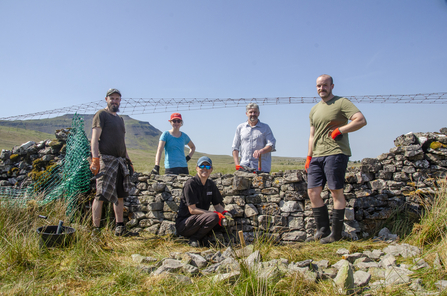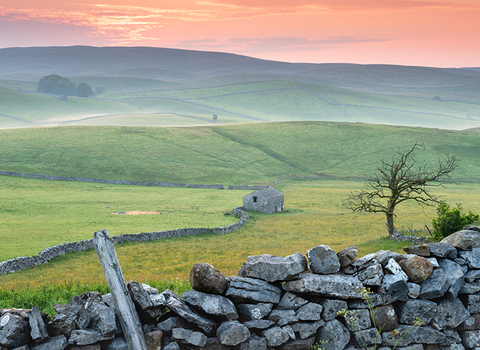Dry stone walls are a vitally important and famous heritage attraction of the Yorkshire Dales, and some of the country’s oldest landscape features. With over 5000 miles of dry stone wall in the Yorkshire Dales, they have shaped the region’s agricultural heritage and link us directly to our past.
The work has been made possible through the Trust’s Wild Ingleborough programme, where grazing with native cattle helps to manage much of the nature reserve around the mountain. Maintaining dry stone walls is a vital way of keeping cattle safe and on the Trust’s land. Dry stone walls are also a vastly underestimated habitat for wildlife; mice, shrews, stoats and voles often take up residence, alongside hundreds of invertebrates, nesting birds and owls.
Dwayne Martindale, Wild Ingleborough Programme Assistant, says, “It typically takes us [three or four days] to restore 10 metres of dry stone wall – so to have restored 400m is a real achievement that we and our incredible volunteers are very proud of.
“Preserving the integrity of style and character while maintaining the structural integrity of dry stone walls is an effort that is ongoing - the scale of the work involved to keep on top of all the walls in the Dales is huge. Alongside the occasional cow knocking into them, our dry stone walls face damage by the elements due to erosion of land, frost, storms and flooding – and vandalism is also a problem, particularly on popular rambling routes where visitors are often tempted to take a short cut over a wall.
“We are immensely grateful for the hard work and effort of our local volunteers, many of whom are out in all weathers to help us maintain Ingleborough’s landscape. We are deeply thankful for the help and support of the local community, many of whom have been kind enough to pass along skills vital for our work. And finally – none of our work would be possible without our members and the generous supporters who have donated to our ongoing Wild Ingleborough appeal.”


